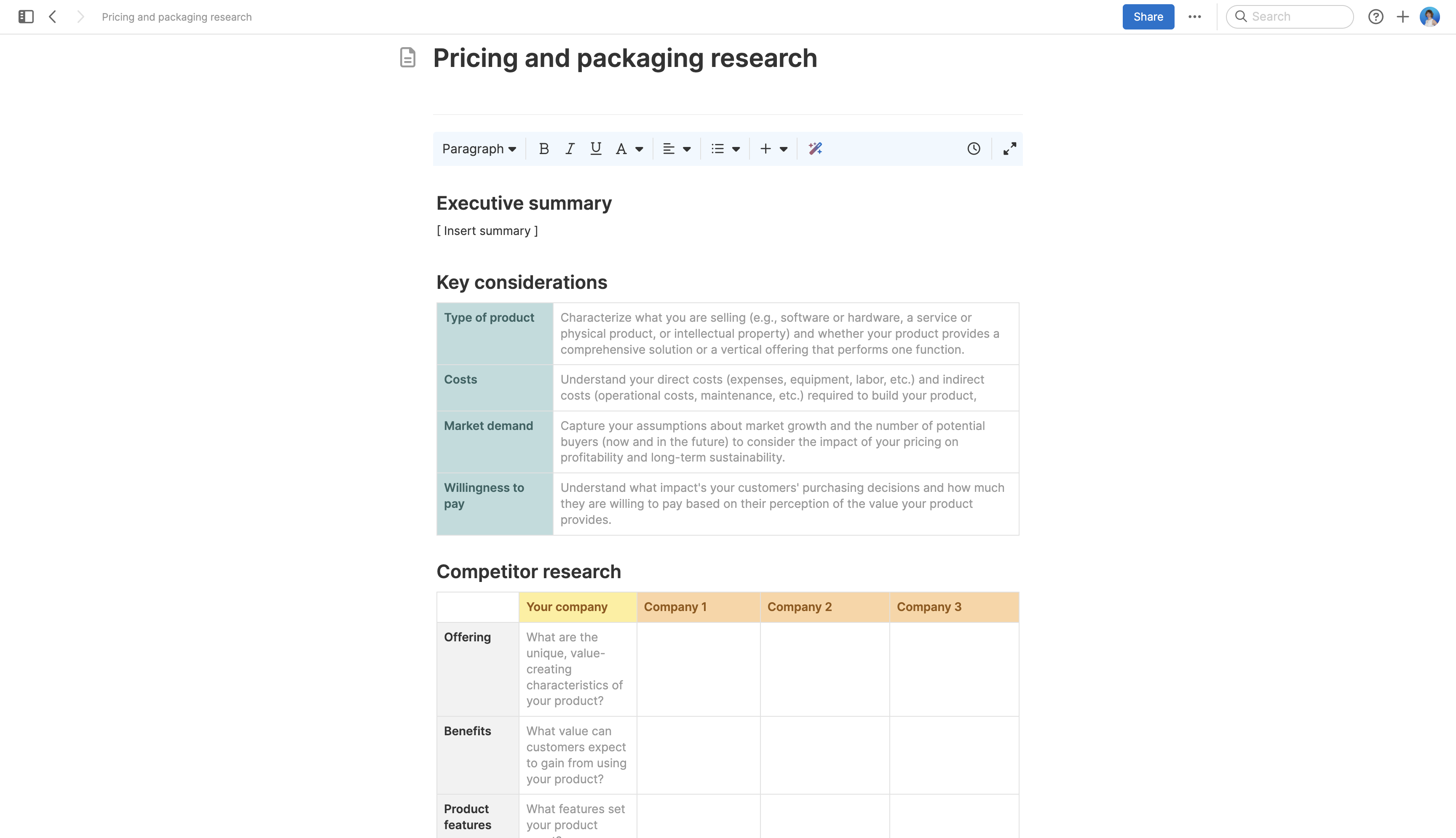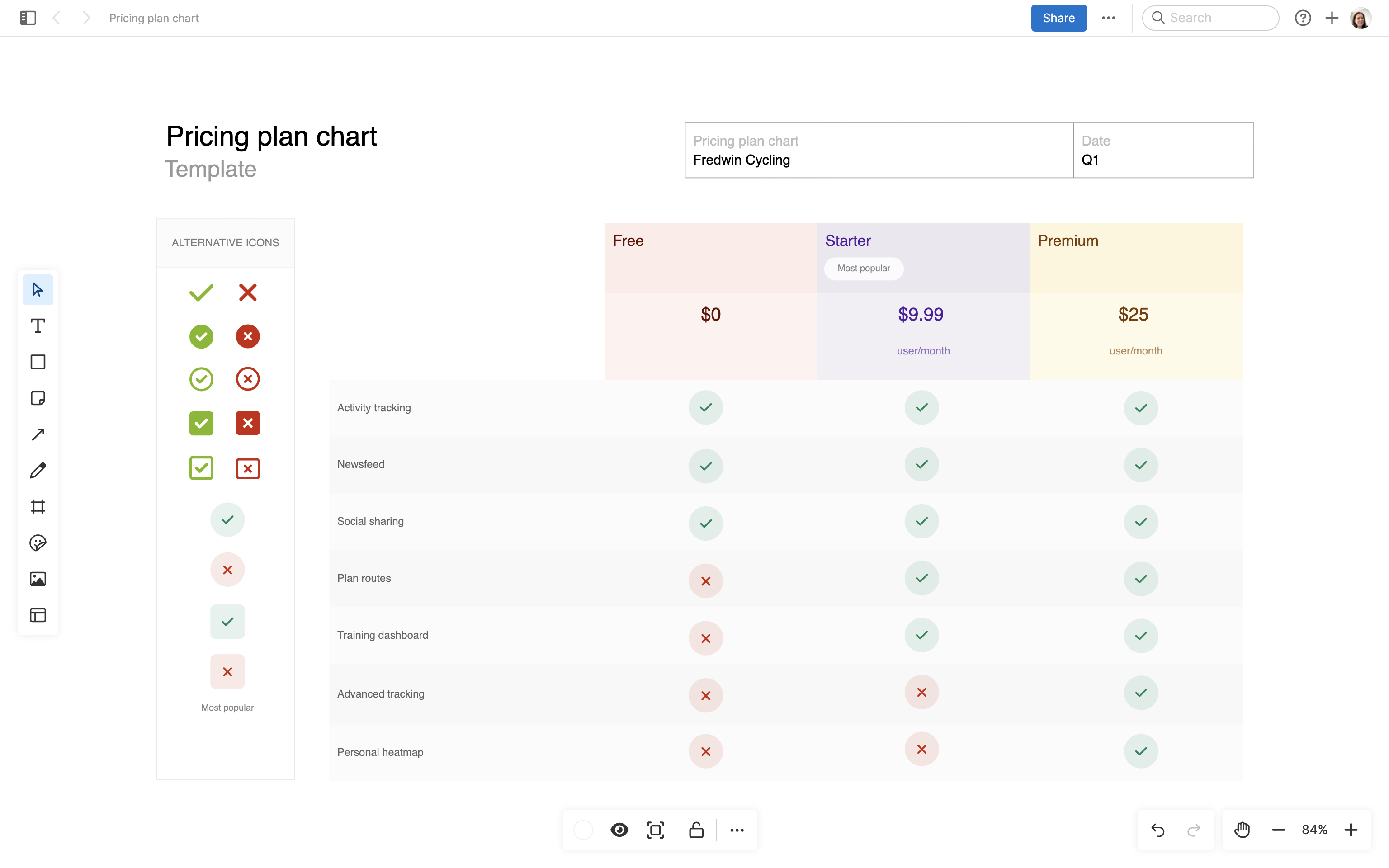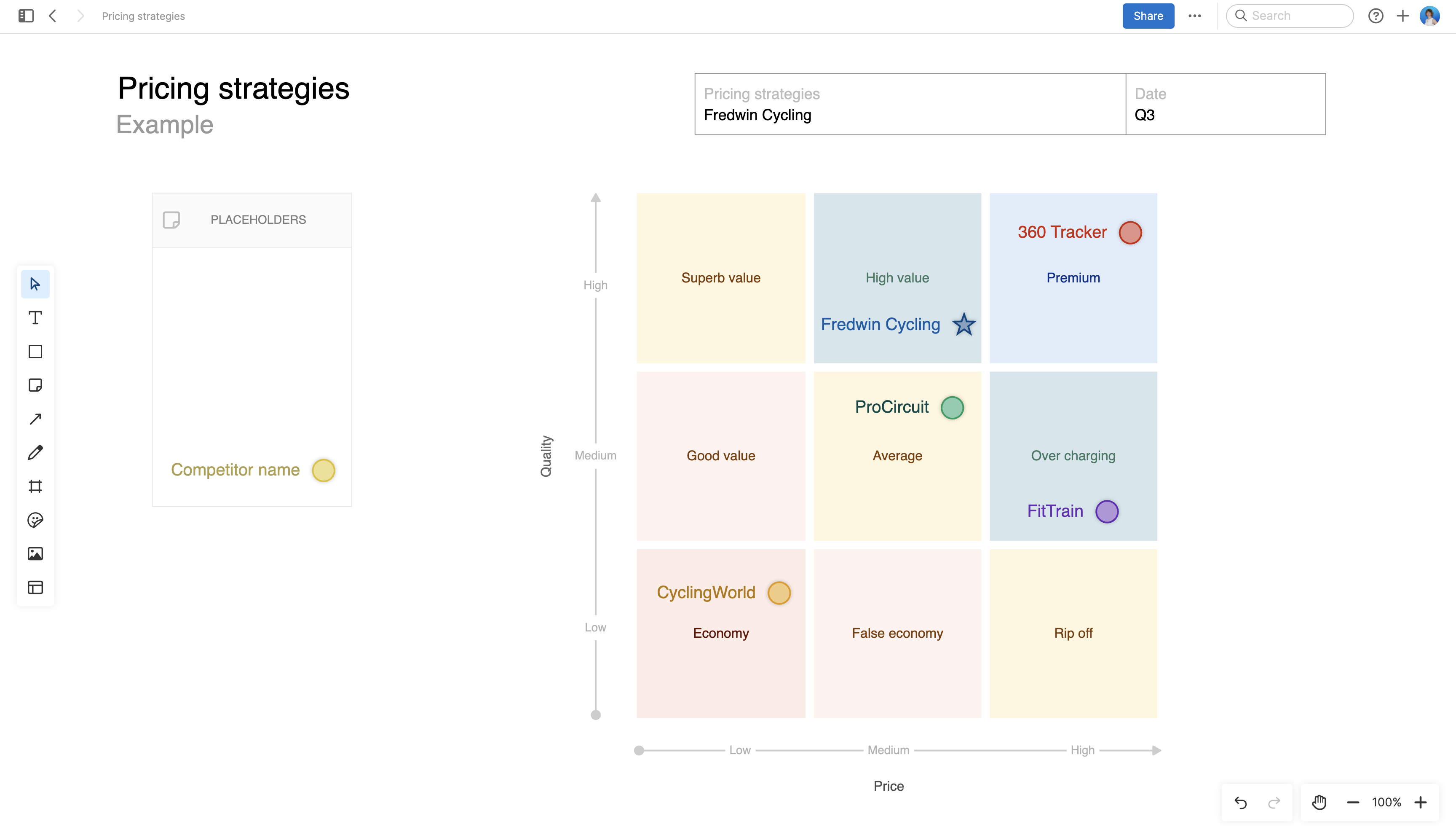How to price your product
Last updated: March 2024
The goal of a product is to provide value that customers are willing to pay for. Setting the right price is about knowing exactly what customers gain from your product and what the benefits are worth to them. Product pricing is one of the most important decisions business leaders and product managers will make.
Pricing communicates to the market exactly what you think your value is. And it directly impacts how much revenue you are able to generate for the organization. If you set the price too high or too low — or choose the wrong pricing structure altogether — you may not find enough customers who will buy the product. Your business can fail to take off simply because it is priced incorrectly.
Companies commonly need to test different prices to see what will get the best response. As a product manager, the extent to which you own pricing decisions will vary from company to company. Typically you will play a supporting role alongside executive leadership, sales, and marketing. No matter how much you influence the final decision, it is important to know how to get pricing right.
Set product strategy in Aha! Roadmaps. Sign up for a trial.
Keep reading or jump ahead here:
What to consider before setting a price
Pricing is about market perception and making sure that the value offered lines up with the asking price. Your pricing decisions should always be rooted in strategy. Factors like market research and product positioning will inform the decisions you make about your product's price point (i.e., base price) and its pricing model (i.e, recurring fees or subscriptions). Consider the following before determining a price:
Type of product | Characterize what you are selling (e.g., software or hardware, a service or physical product, or intellectual property). Is the product a comprehensive solution or a vertical offering that performs one function? Consider the value of the product based on its type and the direct costs (expenses, equipment, labor, etc.) and indirect costs (operational costs, maintenance, etc.) required to build it. |
Market landscape | Identify market factors that impact demand and your opportunity in the market. For instance, you need to know how much customers are paying for similar products and what your competitors are charging. You also need to consider the market share you hope to achieve — both in terms of value (percentage of market sales) and volume (number of total products sold). |
Positioning | Revisit your product positioning. If you are a value brand appealing to practicality, a lower price point is likely more desirable. If you appeal to a luxury market, your price point may be higher. |
Differentiation | Get clear on what sets you apart from other available products. Differentiating factors can include all sorts of things — product features, quality, customer service, or the company's origin story. Pricing can also be a point of differentiation too. |
Organizational needs | Consider the needs of your organization. The price you choose will influence profitability and long-term sustainability. Your price also reflects the effort and intellect of your product team. |
The psychology of pricing
Buyers have their own ideas about the value of your offering and their perceptions impact how much they are willing to pay. This is why the product with the lowest price does not always win out. For instance, buyers may opt for a higher-priced product if they recognize it as better quality or providing better service.
There have been many studies about the types of pricing adjustments that result in more sales. For example, buyers have learned to equate prices ending in 9, 99, or 95 with bargains or value pricing. In some cases, brands actually drive more sales when they price products in this way rather than rounding the price up.
Customer perceptions are not always predictable or consistent. So if you want to understand how customers perceive your product, the best way is to speak directly with them. Collect feedback via surveys, focus groups, or one-on-one interviews to gain insights about what they value and how they make purchasing decisions.
Pricing is a strategic commitment that will have a massive impact on the success of the business. Once you have a clear picture of what you are selling, who you are selling it to and why, you will be in a better position to evaluate whether your pricing aligns with the larger strategy for your business.
How to determine the product's price point
Market awareness, product positioning, differentiation, business needs — you have collected the data that will inform your pricing strategy. Based on your assessments, you can determine a target price or price range. You might consider that range through the lens of the following pricing strategies:
Cost-plus pricing | Determine the selling price by adding a percentage markup to the unit cost of the product. Start with your direct material costs, labor costs, and overhead costs — then add a profit margin. As a simple example, let's say you are selling something that costs $10. Pricing the item at $15 would provide a 50 percent margin on each item to help sustain your business. |
Targeted return pricing | Calculate the price based on your desired profit or return on investment (ROI) of a certain quantity. You can determine targeted return pricing using this formula: Targeted return price = unit cost + (desired return x invested capital) / unit sales Let's say you invested $500,000 in the business and you want to set a price to earn 30 percent ROI. The cost to produce each item is $10 and you project you will sell 20,000 items. Based on targeted return pricing, you would set your price at $17.50. Targeted return price = $10 + (.30 x $500,000) / 20,000 = $10 + $7.50 = $17.50 |
Value-based pricing | Align your price with what customers are willing to pay — based on customer research and competitive analysis. If a competitor charges $25 and customers perceive your product as higher quality, you may choose a price of $30. |
There are many other factors to consider — such as the demand for your product, the number of potential buyers now and in the future, and expectations of future price changes. Generally, pricing is not a decision you make once. You may need to test different prices in the market to reach an optimal price. And as your product evolves and matures, your pricing may need to change alongside it.
How to choose a pricing model
For many SaaS products, pricing decisions go beyond choosing a price point. You are selling a service that customers continue to use — which might involve licensing fees, recurring subscription fees, or add-on fees for certain features or levels of service. Here are six of the most common SaaS pricing models:
How it works | What to consider | |
Flat-fee pricing | Customers pay a flat fee on a monthly or annual basis. |
|
Freemium pricing | Customers get a portion of your product for free and then pay monthly or annually for additional features. |
|
Usage pricing | Customers pay as they go based on feature usage or time in their account. |
|
Per-user pricing | Customers pay based on the number of users who have access to the account. The cost per user may vary based on user type or features used. |
|
Tiered pricing | Customers choose from different tiers of pricing — each tier offers different features and is designed to meet the needs of different users. |
|
Feature-based pricing | Customers pay a flat fee for a base set of features and pay more for additional features. |
|
Pricing structures for enterprise software tend to be more complex or customizable compared to a basic consumer application. It can be valuable to learn what other brands in a similar market charge, but do not choose a pricing model simply because it is common. The model that is best suited for your product will depend on your customers, their needs, and how they use your product.
Product pricing templates
Because pricing is such a complex process, it can be difficult to know where to start. That is where templates can help. Below are three product pricing templates available in Aha! software — all equipped with expert guidance and examples. Each lives in shareable whiteboard or document which makes it simple to collaborate with stakeholders.
Pricing and packaging research template
Any successful pricing strategy requires research. You want to have a solid understanding of how others in the market are pricing products similar to yours — so you can determine how your price should compare. The pricing and packaging research template offers a streamlined way to structure this research and collect your findings.



